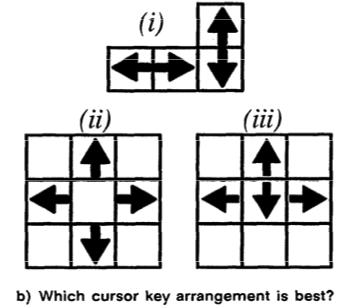Figure 1b shows three cursor key configurations used to move the user’s screen position left, right, up, and down. Setting aside factors introduced by the size and shape of the keyboard and the locations of other keys, which is the best design?
The set of 24 interface experts unanimously chose the star (ii) as the design that they thought novices would rate most highly and about half of them also chose the star as the best design. The star has an obvious aesthetic appeal and it is consistent by analogy with directional indicators that appear on compasses, maps, and so forth.
But studies have shown that the inverted T (iii) is the most usable configuration and its use is spreading through the industry. Users require access to opposed pairs of directional keys (e.g. to compensate for overshoot), and with (ii), with the index finger on the cursor left key and the ring finger on cursor right, the middle finger can cover both the cursor up and cursor down keys most efficiently. This performance advantage may have first been discovered by the designers of fast-action computer games, who often map the directional movements to the i, j, k, and l keys, which form the inverted T pattern.
The appropriate design is based on an understanding of the cursor manipulation task and of the user-in this case, the physical characteristics of the hand. In both function key examples, designs consistent with external experience were tried, but ultimately were found to work against performance efficiency.
Źródło: The Case Against User Interface Consistency, Jonathan Grudin, Communications of the ACM, ACM 1989






Recent Comments